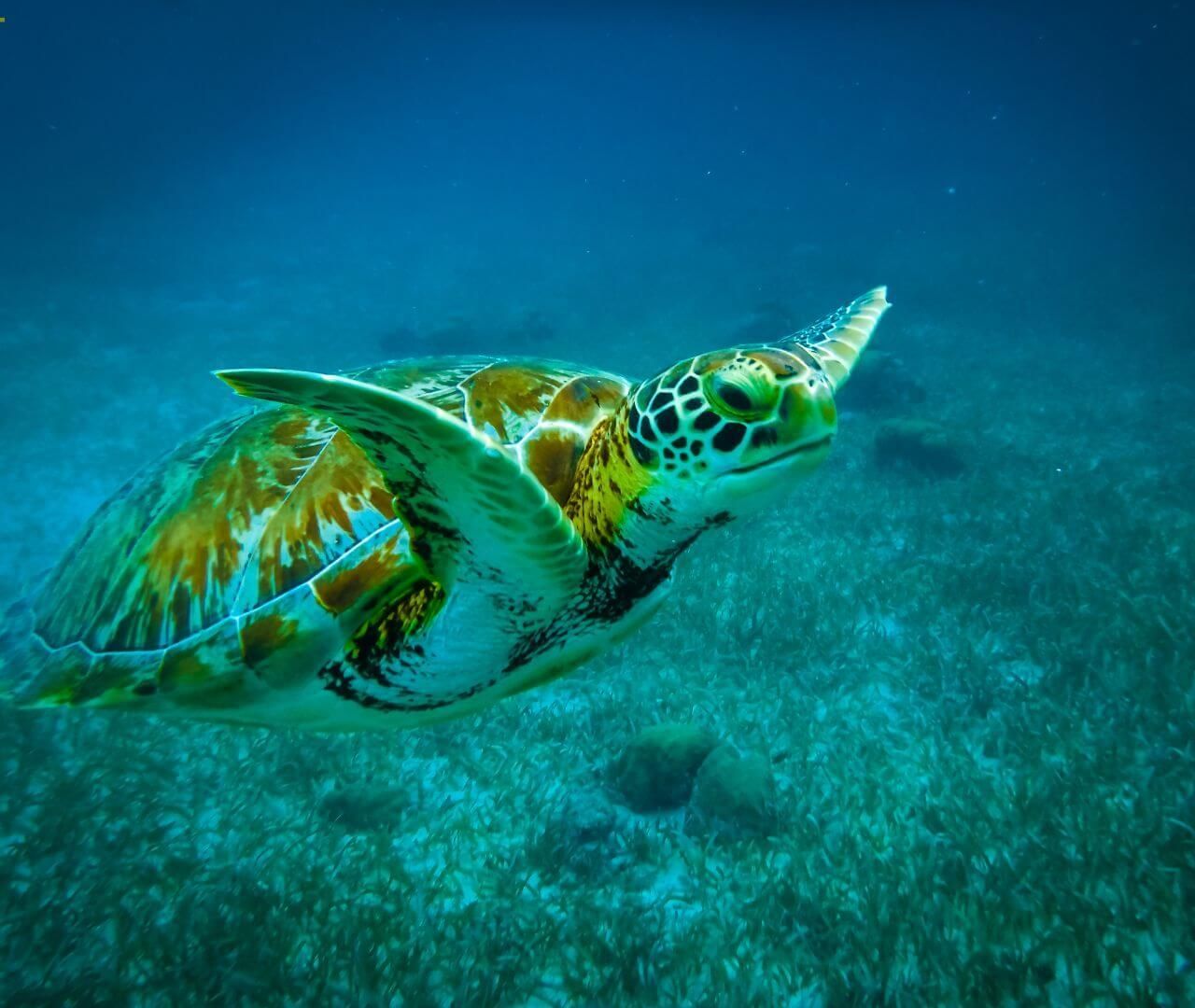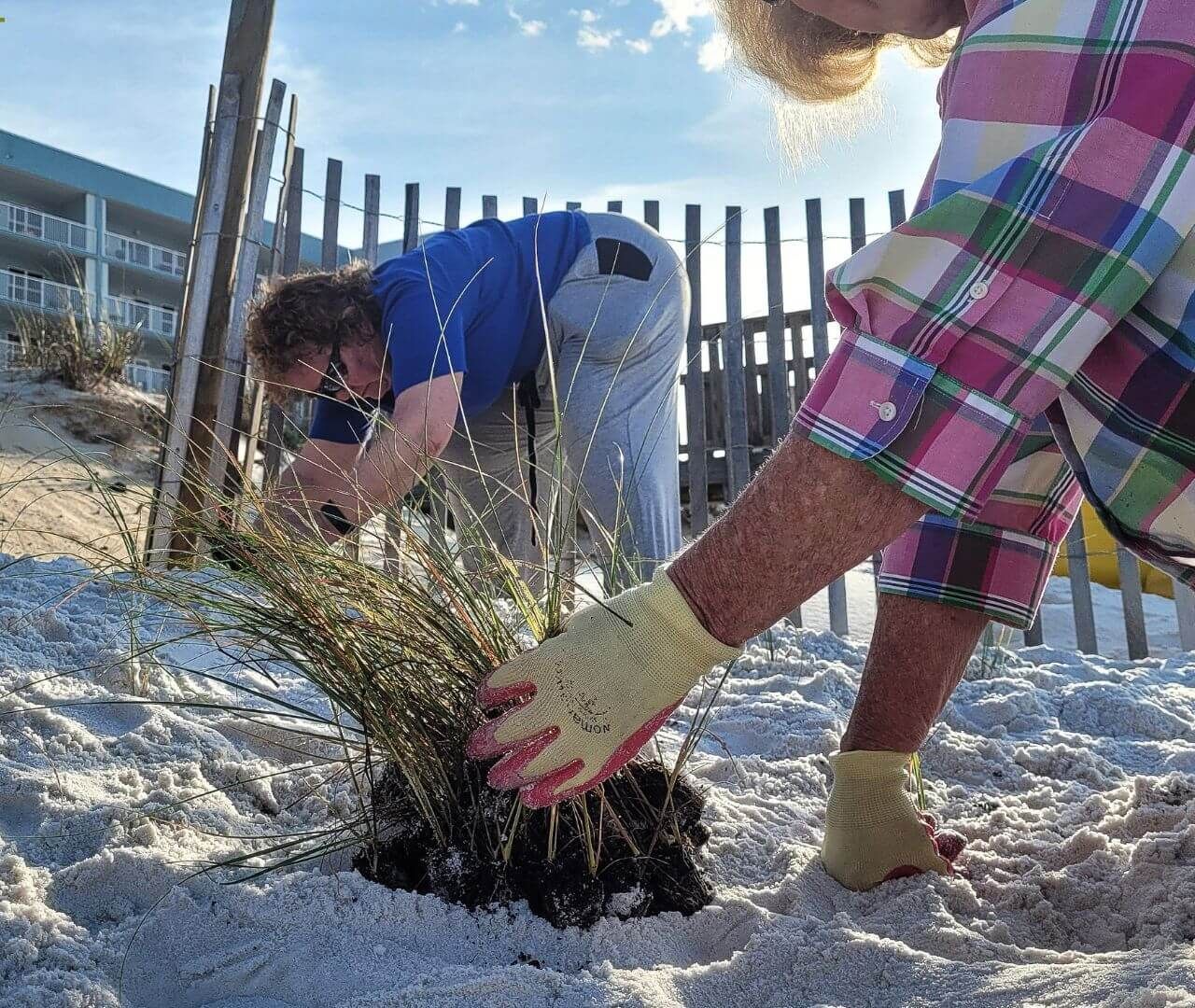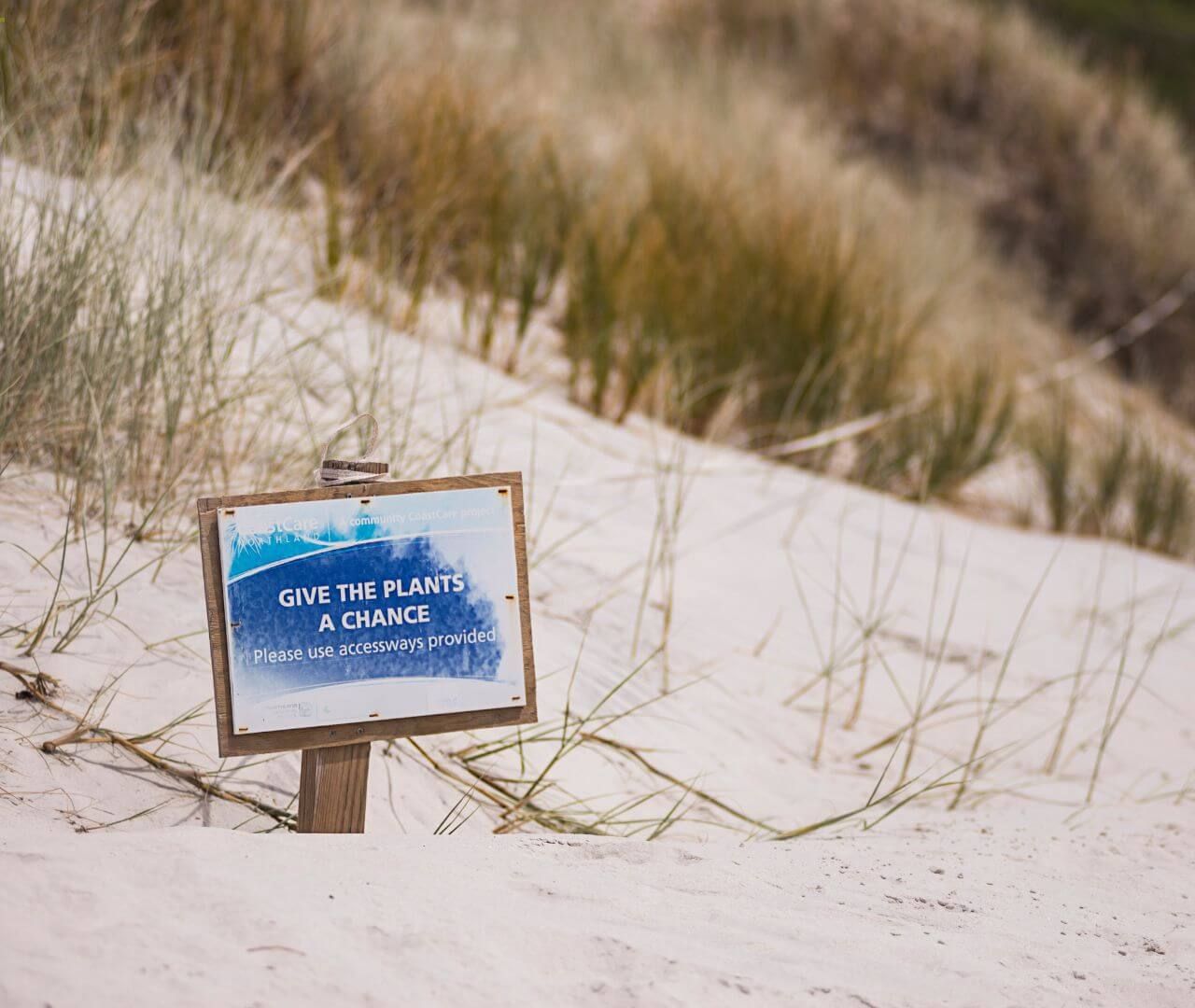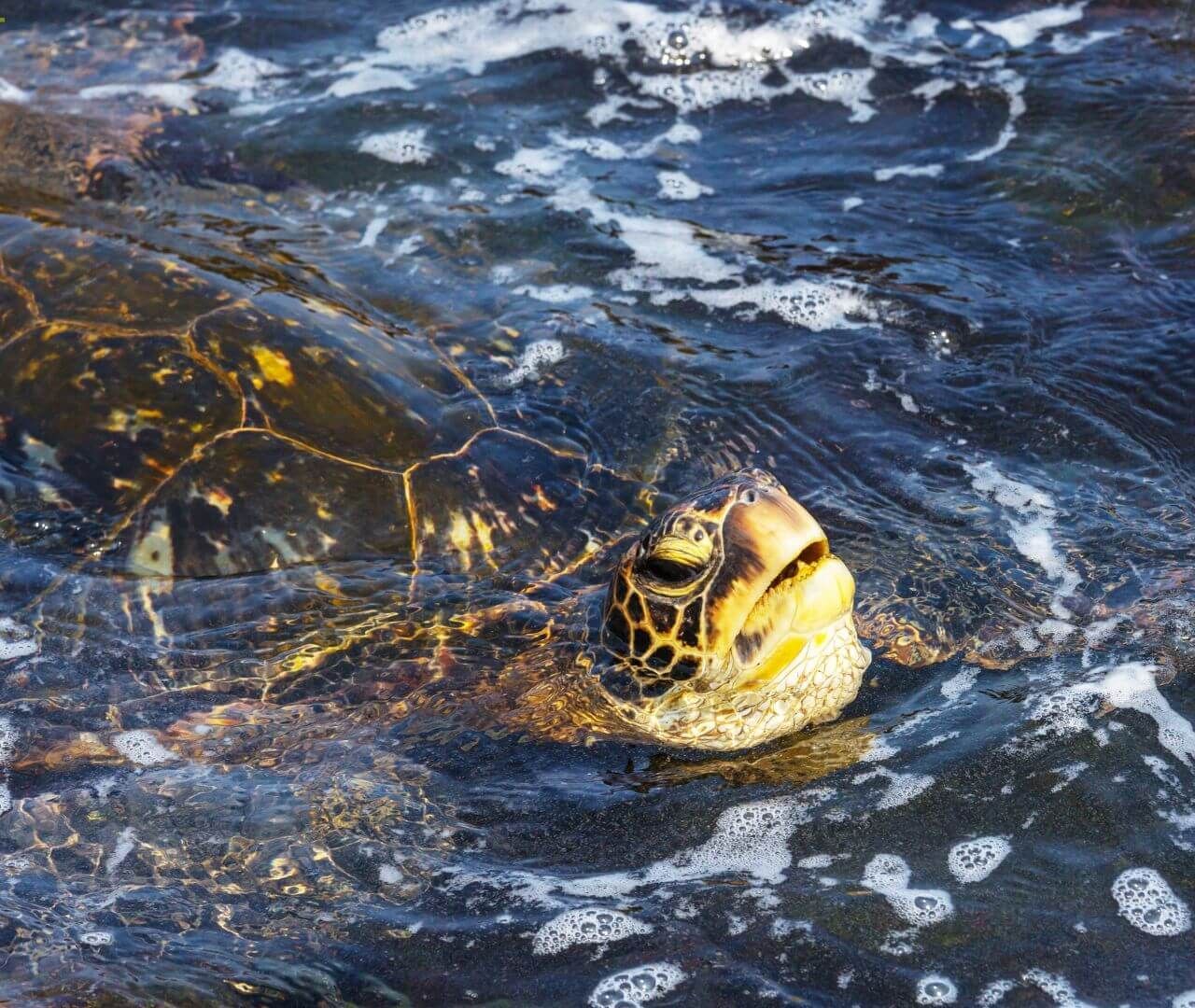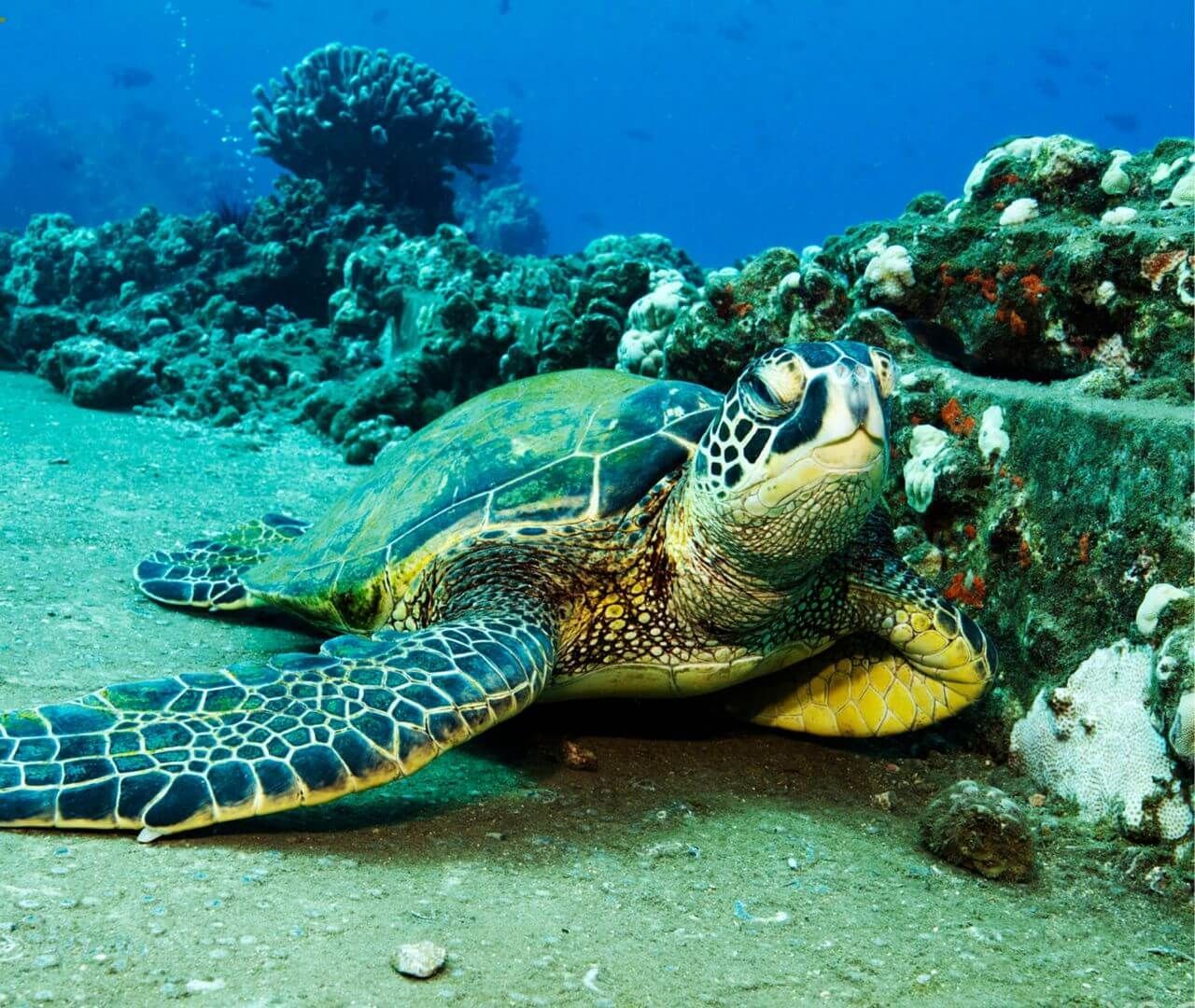Green Sea Turtles

Let's Learn About Green Sea Turtles
Word of the Week
Oviparous
Oviparous animals lay eggs. Sea turtles, birds, and crocodiles are oviparous.
The opposite of oviparous is viviparous. Viviparous animals have live offspring. Elephants, whales, and humans are viviparous.
Having trouble remembering? Think, "O" is the shape of an egg.
Fast Facts
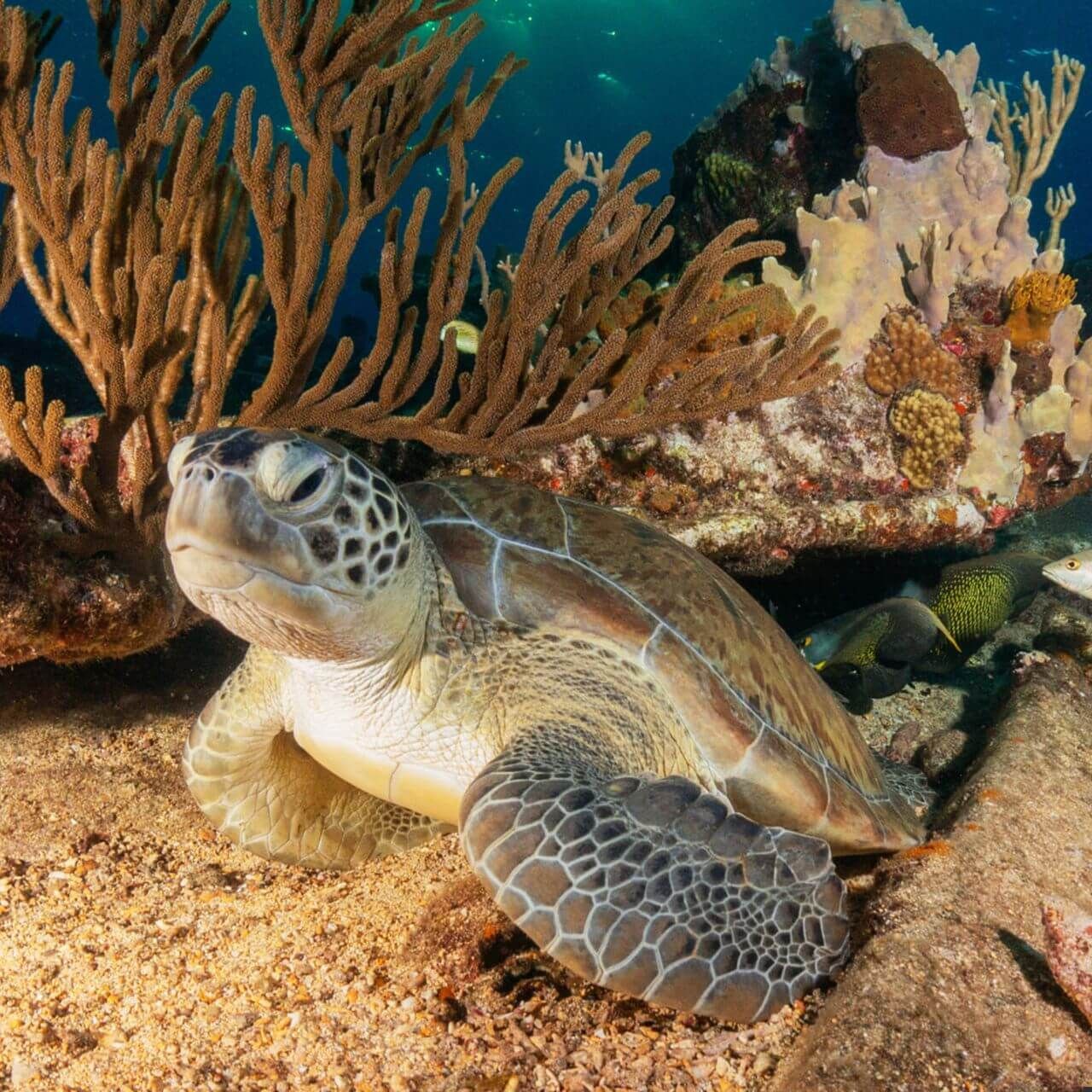
Where do green sea turtles live?
Green sea turtles live in tropical and subtropical oceans, including the Pacific Ocean, Atlantic Ocean, and Indian Ocean.
They spend most of their adult lives in warm, shallow lagoons. They migrate across the open ocean when it comes time to reproduce.
What do green sea turtles eat?
Adult green sea turtles are herbivores. They mainly eat sea grass.
A green sea turtle's diet changes during its life. When young, green sea turtles are carnivores. They eat fish and sea slug eggs, jellyfish, and worms. As they get older, they eat more algae and become omnivores. As adults, they are herbivores and rarely eat meat.
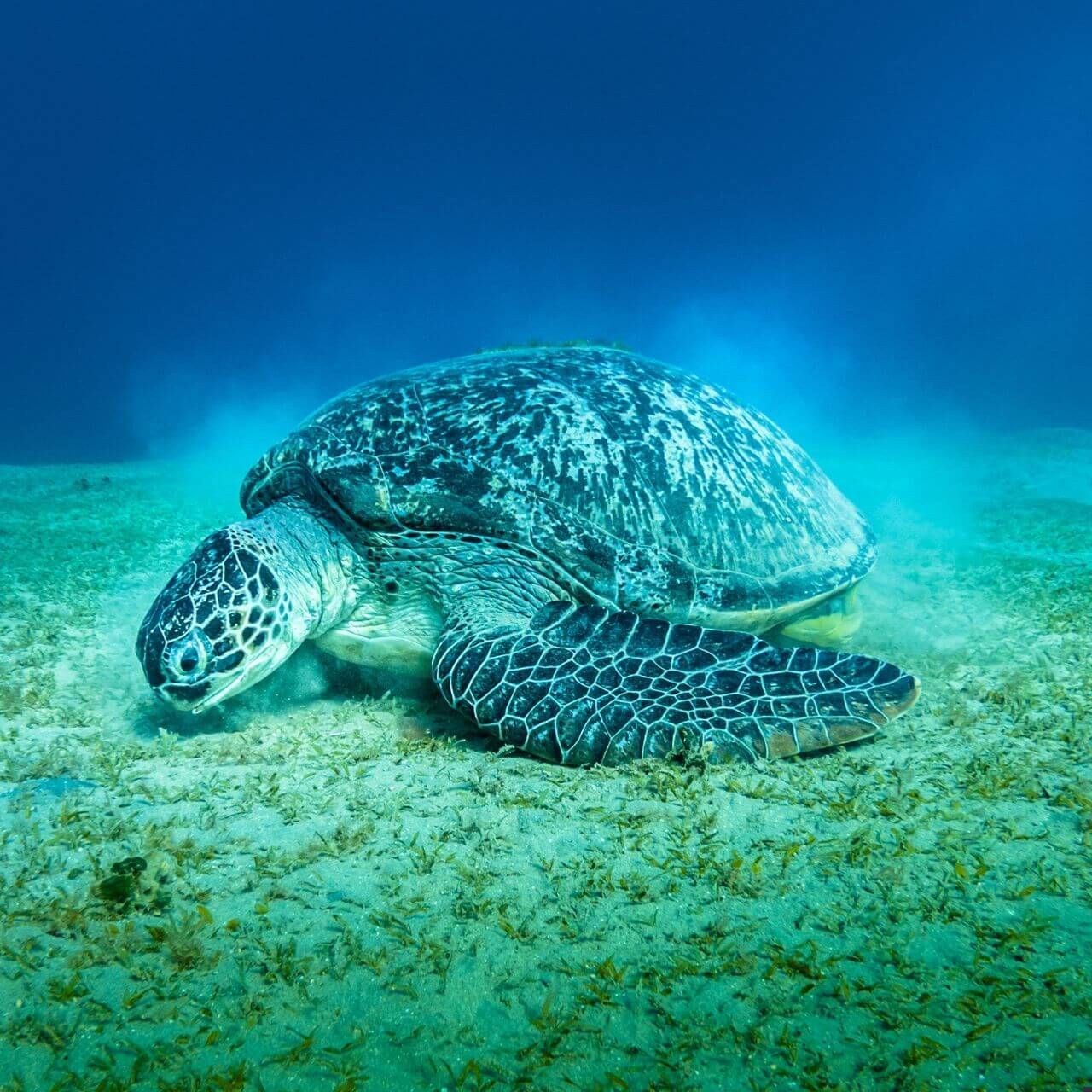
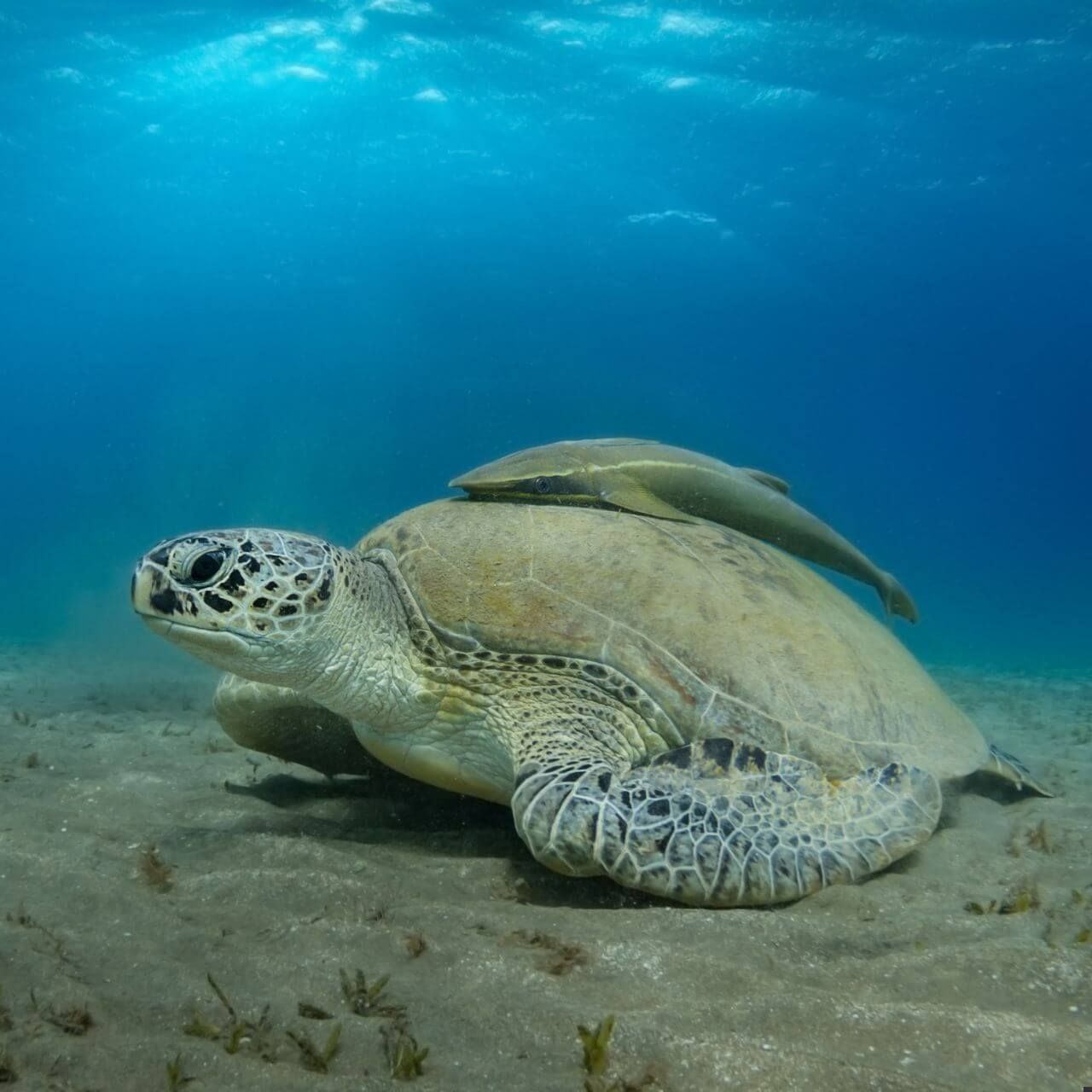
How are green sea turtles similar to other sea turtles?
Green sea turtles are one of seven sea turtle species. Like all sea turtles, they...
- Are fully aquatic.
- Have flippers and streamline bodies.
- Cannot pull their head inside of their shell.
- Return to their natal beach for reproducing.
- Bury their eggs in sand and do not care for their offspring.
How many green sea turtles are there?
Green sea turtles are classified as endangered. However, scientists do not have an estimate for how many exist in the wild.
Fewer than 1% of green sea turtles survive to adulthood. They can be found anywhere within thousands of miles of ocean, making them hard to count and study. Scientists predict their populations are decreasing due to threats from people, such as lost of nesting sites, pollution, and unsustainable fishing.
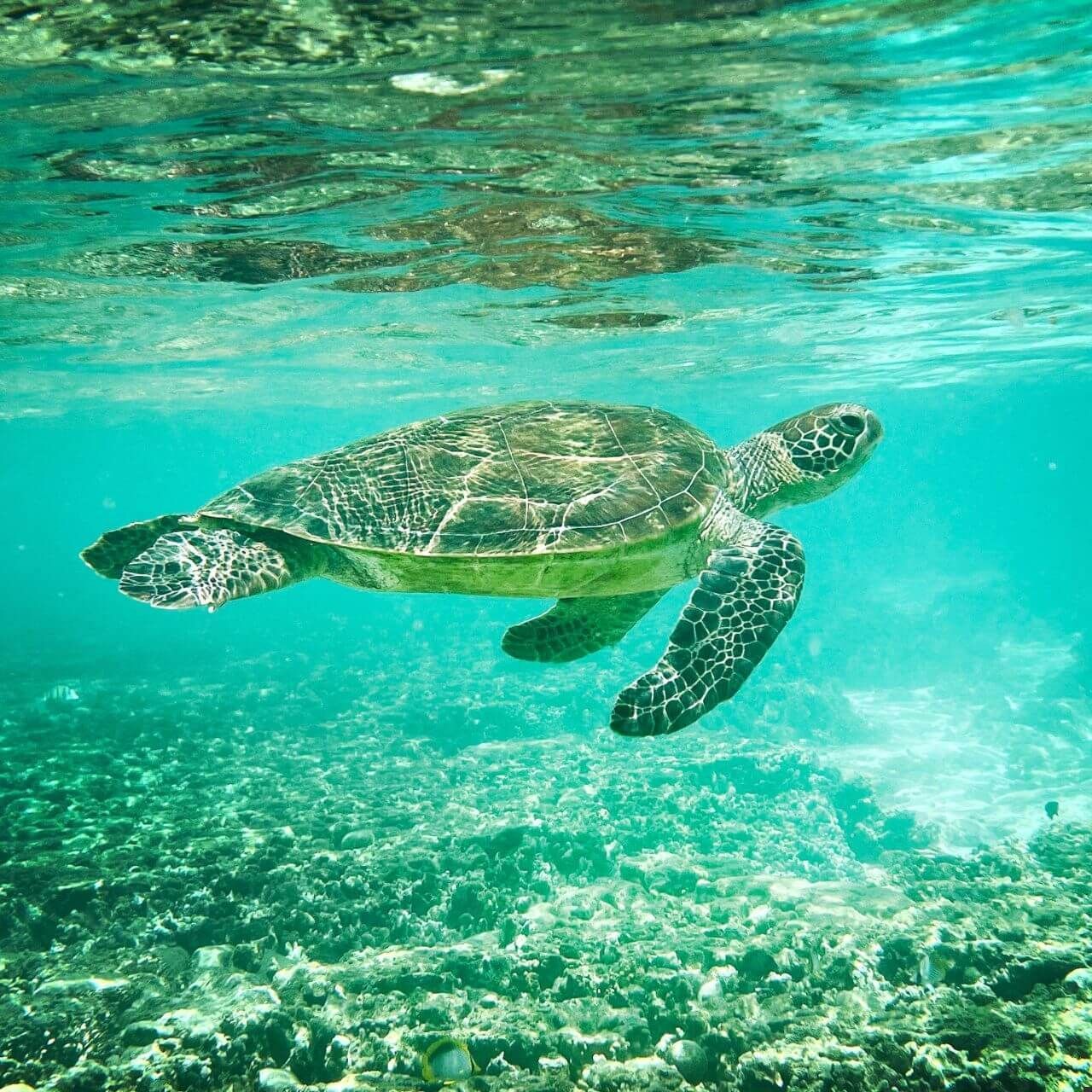
Species Spotlight
Seven Sea Turtle Species
All seven species of sea turtles spend most of their lives in the ocean. They have flippers, streamlined bodies, and enormous lungs. They travel great distances to reproduce near the same beach where they were born. But what makes each sea turtle species unique?
Size:
Green sea turtles are the second-largest sea turtle. They weigh up to 400 lbs (about as much as a male lion!). Leatherback sea turtles are the largest. They weigh more than 1,000 lbs. The smallest sea turtle, the critically endangered Kemp’s ridley sea turtle, weighs less than 100 lbs.
Color:
Though they are called green sea turtles, this species has a brown shell. Leatherback sea turtles have a soft, dark-gray shell. Most of the other species have olive-brown shells of different sizes and shapes.
Diet:
As adults, green sea turtles are herbivores. They mainly eat seagrass. Other sea turtles are omnivores or carnivores. For example, leatherback sea turtles eat jellyfish, hawksbill sea turtles eat sponges, and loggerhead sea turtles eat crabs.
Range:
Most sea turtles migrate across warm open oceans, but their ranges and habitats are slightly different. Other than during migration, adult green sea turtles usually live in warm, shallow lagoons, while hawksbill turtles prefer coral reefs. Flatback turtles are only found around Australia, while leatherback sea turtles spend time in cold water.
All seven species of sea turtles are similar, and some are easily confused. However, each has its own unique traits that make it fascinating and worth protecting.
Conservation Corner
Restoring Sea Turtles Nesting Beaches
Each year, female sea turtles swarm flat, sandy beaches to lay eggs. They return to the same beach each time, the same beach they were born on. Unfortunately, these beaches are changing. Pollution, beach visitors, and beachside houses and hotels create problems for sea turtle nests and hatchlings.
In Australia’s Magnetic Island, beaches are also threatened by invasive plants and storm damage. Invasive siratro plants have thick, carrot-like roots. The roots prevent turtles from digging nests because they are too strong. Additionally, storms have become larger and more frequent, causing sand to become unstable and wash away. The local conservation group Envite Environment set out to solve these problems.
The Turtle Friendly Climate Resilient Coastlines removes invasive plants along beaches where green sea turtles and flatback sea turtles nest. They replace invasive plants with native plants that stabilize the sand with wide roots. The roots of native plants are thin and easily broken by digging sea turtles.
Knowing exactly where and when sea turtles lay eggs helps us protect them. Conservationists noticed success almost immediately after restoring the first section of beach when 8 turtles quickly nested in the area.
Green Sea Turtle Solutions
Determine if each statement about green sea turtle breeding is true or false.
Learn More!
Glossary
Adaptation
The process by which a species becomes more fit for its environment over the course of several generations. It is a result of natural selection.
Aquatic
Living in water.
Bask
[For cold-blooded animals]: To lay out in the sun or other warm area to increase body temperature.
Carnivore
An animal that primarily eats meat.
Conservation
The act of preserving the environment.
Ectotherm
An animal that relies on the outside temperature to regulate their body temperature (reptiles and amphibians). Also known as cold-blooded.
Hatchling
A young animal recently hatched from an egg.
Herbivore
An animal that eats mostly plants.
Lagoon
An shallow area of ocean protected by sand banks or coral reefs.
Migration
The process of an animal moving to a new location during a specific time of the year.
Natal
Relating to time or place of an animal's birth.
Natal Homing
The process of an animal returning to its birth place to reproduce.
Omnivore
An animal that eats both plants and animals.
Poaching
The illegal hunting or collection of wild animals.
Pollution
Toxins or other harmful substances that have entered the environment and harm the natural world.
Reptile
A group of ectothermic (cold-blooded) vertebrates that are covered in scales and generally lay eggs.
Species
A closely related group of animals with similar characteristics that are capable of reproducing (example: tigers).
Tropical
A region near the equator that has warm temperatures year round.

